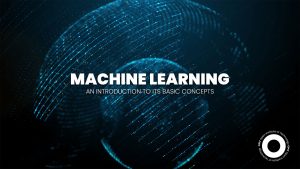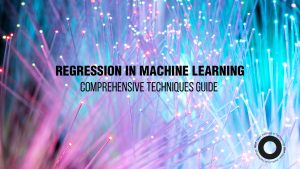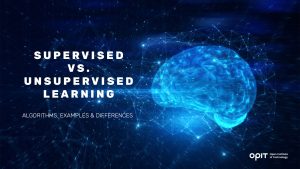
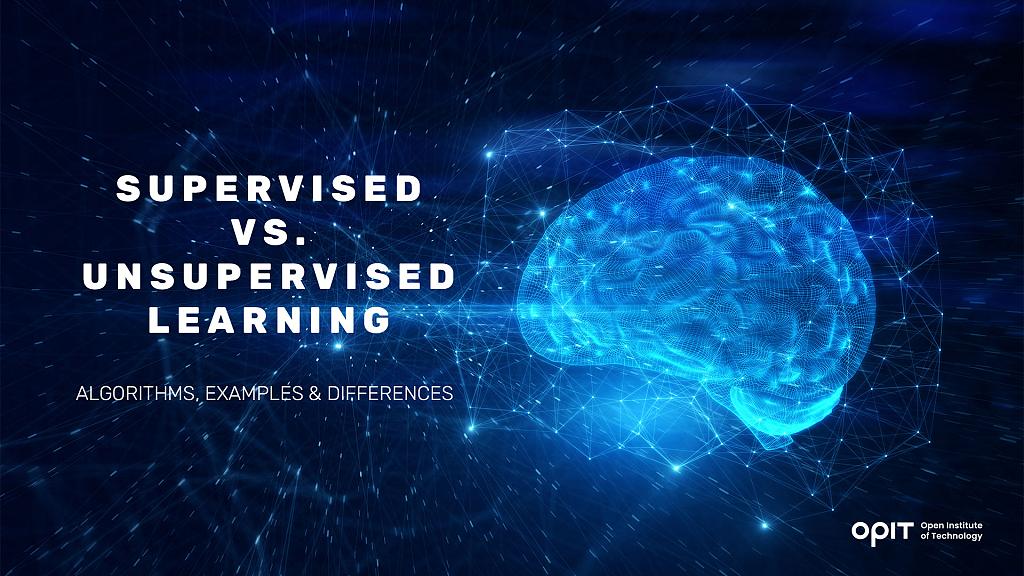
The human brain is among the most complicated organs and one of nature’s most amazing creations. The brain’s capacity is considered limitless; there isn’t a thing it can’t remember. Although many often don’t think about it, the processes that happen in the mind are fascinating.
As technology evolved over the years, scientists figured out a way to make machines think like humans, and this process is called machine learning. Like cars need fuel to operate, machines need data and algorithms. With the application of adequate techniques, machines can learn from this data and even improve their accuracy as time passes.
Two basic machine learning approaches are supervised and unsupervised learning. You can already assume the biggest difference between them based on their names. With supervised learning, you have a “teacher” who shows the machine how to analyze specific data. Unsupervised learning is completely independent, meaning there are no teachers or guides.
This article will talk more about supervised and unsupervised learning, outline their differences, and introduce examples.
Supervised Learning
Imagine a teacher trying to teach their young students to write the letter “A.” The teacher will first set an example by writing the letter on the board, and the students will follow. After some time, the students will be able to write the letter without assistance.
Supervised machine learning is very similar to this situation. In this case, you (the teacher) train the machine using labeled data. Such data already contains the right answer to a particular situation. The machine then uses this training data to learn a pattern and applies it to all new datasets.
Note that the role of a teacher is essential. The provided labeled datasets are the foundation of the machine’s learning process. If you withhold these datasets or don’t label them correctly, you won’t get any (relevant) results.
Supervised learning is complex, but we can understand it through a simple real-life example.
Suppose you have a basket filled with red apples, strawberries, and pears and want to train a machine to identify these fruits. You’ll teach the machine the basic characteristics of each fruit found in the basket, focusing on the color, size, shape, and other relevant features. If you introduce a “new” strawberry to the basket, the machine will analyze its appearance and label it as “strawberry” based on the knowledge it acquired during training.
Types of Supervised Learning
You can divide supervised learning into two types:
- Classification – You can train machines to classify data into categories based on different characteristics. The fruit basket example is the perfect representation of this scenario.
- Regression – You can train machines to use specific data to make future predictions and identify trends.
Supervised Learning Algorithms
Supervised learning uses different algorithms to function:
- Linear regression – It identifies a linear relationship between an independent and a dependent variable.
- Logistic regression – It typically predicts binary outcomes (yes/no, true/false) and is important for classification purposes.
- Support vector machines – They use high-dimensional features to map data that can’t be separated by a linear line.
- Decision trees – They predict outcomes and classify data using tree-like structures.
- Random forests – They analyze several decision trees to come up with a unique prediction/result.
- Neural networks – They process data in a unique way, very similar to the human brain.
Supervised Learning: Examples and Applications
There’s no better way to understand supervised learning than through examples. Let’s dive into the real estate world.
Suppose you’re a real estate agent and need to predict the prices of different properties in your city. The first thing you’ll need to do is feed your machine existing data about available houses in the area. Factors like square footage, amenities, a backyard/garden, the number of rooms, and available furniture, are all relevant factors. Then, you need to “teach” the machine the prices of different properties. The more, the better.
A large dataset will help your machine pick up on seemingly minor but significant trends affecting the price. Once your machine processes this data and you introduce a new property to it, it will be able to cross-reference its features with the existing database and come up with an accurate price prediction.
The applications of supervised learning are vast. Here are the most popular ones:
- Sales – Predicting customers’ purchasing behavior and trends
- Finance – Predicting stock market fluctuations, price changes, expenses, etc.
- Healthcare – Predicting risk of diseases and infections, surgery outcomes, necessary medications, etc.
- Weather forecasts – Predicting temperature, humidity, atmospheric pressure, wind speed, etc.
- Face recognition – Identifying people in photos
Unsupervised Learning
Imagine a family with a baby and a dog. The dog lives inside the house, so the baby is used to it and expresses positive emotions toward it. A month later, a friend comes to visit, and they bring their dog. The baby hasn’t seen the dog before, but she starts smiling as soon as she sees it.
Why?
Because the baby was able to draw her own conclusions based on the new dog’s appearance: two ears, tail, nose, tongue sticking out, and maybe even a specific noise (barking). Since the baby has positive emotions toward the house dog, she also reacts positively to a new, unknown dog.
This is a real-life example of unsupervised learning. Nobody taught the baby about dogs, but she still managed to make accurate conclusions.
With supervised machine learning, you have a teacher who trains the machine. This isn’t the case with unsupervised learning. Here, it’s necessary to give the machine freedom to explore and discover information. Therefore, this machine learning approach deals with unlabeled data.
Types of Unsupervised Learning
There are two types of unsupervised learning:
- Clustering – Grouping uncategorized data based on their common features.
- Dimensionality reduction – Reducing the number of variables, features, or columns to capture the essence of the available information.
Unsupervised Learning Algorithms
Unsupervised learning relies on these algorithms:
- K-means clustering – It identifies similar features and groups them into clusters.
- Hierarchical clustering – It identifies similarities and differences between data and groups them hierarchically.
- Principal component analysis (PCA) – It reduces data dimensionality while boosting interpretability.
- Independent component analysis (ICA) – It separates independent sources from mixed signals.
- T-distributed stochastic neighbor embedding (t-SNE) – It explores and visualizes high-dimensional data.
Unsupervised Learning: Examples and Applications
Let’s see how unsupervised learning is used in customer segmentation.
Suppose you work for a company that wants to learn more about its customers to build more effective marketing campaigns and sell more products. You can use unsupervised machine learning to analyze characteristics like gender, age, education, location, and income. This approach is able to discover who purchases your products more often. After getting the results, you can come up with strategies to push the product more.
Unsupervised learning is often used in the same industries as supervised learning but with different purposes. For example, both approaches are used in sales. Supervised learning can accurately predict prices relying on past data. On the other hand, unsupervised learning analyzes the customers’ behaviors. The combination of the two approaches results in a quality marketing strategy that can attract more buyers and boost sales.
Another example is traffic. Supervised learning can provide an ETA to a destination, while unsupervised learning digs a bit deeper and often looks at the bigger picture. It can analyze a specific area to pinpoint accident-prone locations.
Differences Between Supervised and Unsupervised Learning
These are the crucial differences between the two machine learning approaches:
- Data labeling – Supervised learning uses labeled datasets, while unsupervised learning uses unlabeled, “raw” data. In other words, the former requires training, while the latter works independently to discover information.
- Algorithm complexity – Unsupervised learning requires more complex algorithms and powerful tools that can handle vast amounts of data. This is both a drawback and an advantage. Since it operates on complex algorithms, it’s capable of handling larger, more complicated datasets, which isn’t a characteristic of supervised learning.
- Use cases and applications – The two approaches can be used in the same industries but with different purposes. For example, supervised learning is used in predicting prices, while unsupervised learning is used in detecting customers’ behavior or anomalies.
- Evaluation metrics – Supervised learning tends to be more accurate (at least for now). Machines still require a bit of our input to display accurate results.
Choose Wisely
Do you need to teach your machine different data, or can you trust it to handle the analysis on its own? Think about what you want to analyze. Unsupervised and supervised learning may sound similar, but they have different uses. Choosing an inadequate approach leads to unreliable, irrelevant results.
Supervised learning is still more popular than unsupervised learning because it offers more accurate results. However, this approach can’t handle larger, complex datasets and requires human intervention, which isn’t the case with unsupervised learning. Therefore, we may see a rise in the popularity of the unsupervised approach, especially as the technology evolves and enables more accuracy.
Related posts
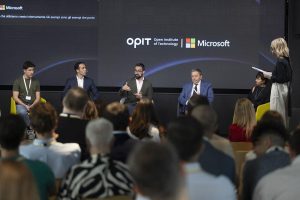
Source:
- Times of Malta, published on September 18th, 2025
4 min read
The gathering brought together academics and technology leaders from prominent European Institutions, such as Instituto de Empresa (IE University), OPIT itself and the Royal College of Arts, to explore how artificial intelligence is reshaping the university experience.
The OPIT AI Copilot has been trained on the institute’s complete academic archive, a collection created over the past three years that includes 131 courses, more than 3,500 hours of recorded lectures, 7,500 study resources, 320 certified assessments, and thousands of exercises and original learning documents.
Unlike generic AI tools, the Copilot is deeply integrated with OPIT’s learning management system, allowing it to track each student’s progress and provide tailored support.
This integration means the assistant can reference relevant sources within the learning environment, adapt to the student’s stage of study, and ensure that unreleased course content remains inaccessible.
A mobile app is also scheduled for release this autumn, that will allow students to download exercise and access other tools.
During examinations, the Copilot automatically switches to what the institute calls an “anti-cheating mode”, restricting itself to general research support rather than providing direct answers.
For OPIT’s international community of 500 students from nearly 100 countries, many of whom balance studies with full-time work, the ability to access personalised assistance at any time of day is a key advantage.
“Eighty-five per cent of students are already using large language models in some way to study,” said OPIT founder and director Riccardo Ocleppo. “We wanted to go further by creating a solution tailored to our own community, reflecting the real experiences of remote learners and working professionals.”
Tool aims to cut correction time by 30%
The Copilot will also reduce administrative burdens for faculty. It can help grade assignments, generate new educational materials, and create rubrics that allow teachers to cut correction time by as much as 30 per cent.
According to OPIT, this will free up staff to dedicate more time to teaching and direct student engagement.
At the Milan event, Rector Francesco Profumo underlined the broader implications of AI in higher education. “We are in the midst of a deep transformation, where AI is no longer just a tool: it is an environment that radically changes how we learn, teach, and create,” he said.
“But it is not a shortcut. It is a cultural, ethical, and pedagogical challenge, and to meet it we must have the courage to rethink traditional models and build bridges between human and artificial intelligence.”
OPIT was joined on stage by representatives from other leading institutions, including Danielle Barrios O’Neill of the Royal College of Art, who spoke about the role of AI in art and creativity, and Francisco Machin of IE University, who discussed applications in business and management education.
OPIT student Asya Mantovani, also employed at a leading technology and consulting firm in Italy, gave a first-hand account of balancing professional life with online study.
The assistant has been in development for the past eight months, involving a team of OPIT professors, researchers, and engineers.
Ocleppo stressed that OPIT intends to make its AI innovations available beyond its own institution. “We want to put technology at the service of higher education,” he said.
“Our goal is to develop solutions not only for our own students, but also to share with global institutions eager to innovate the learning experience in a future that is approaching very quickly.”
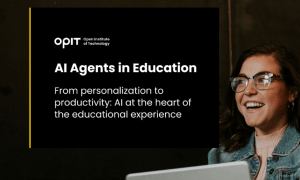
From personalization to productivity: AI at the heart of the educational experience.
Click this link to read and download the e-book.
At its core, teaching is a simple endeavour. The experienced and learned pass on their knowledge and wisdom to new generations. Nothing has changed in that regard. What has changed is how new technologies emerge to facilitate that passing on of knowledge. The printing press, computers, the internet – all have transformed how educators teach and how students learn.
Artificial intelligence (AI) is the next game-changer in the educational space.
Specifically, AI agents have emerged as tools that utilize all of AI’s core strengths, such as data gathering and analysis, pattern identification, and information condensing. Those strengths have been refined, first into simple chatbots capable of providing answers, and now into agents capable of adapting how they learn and adjusting to the environment in which they’re placed. This adaptability, in particular, makes AI agents vital in the educational realm.
The reasons why are simple. AI agents can collect, analyse, and condense massive amounts of educational material across multiple subject areas. More importantly, they can deliver that information to students while observing how the students engage with the material presented. Those observations open the door for tweaks. An AI agent learns alongside their student. Only, the agent’s learning focuses on how it can adapt its delivery to account for a student’s strengths, weaknesses, interests, and existing knowledge.
Think of an AI agent like having a tutor – one who eschews set lesson plans in favour of an adaptive approach designed and tweaked constantly for each specific student.
In this eBook, the Open Institute of Technology (OPIT) will take you on a journey through the world of AI agents as they pertain to education. You will learn what these agents are, how they work, and what they’re capable of achieving in the educational sector. We also explore best practices and key approaches, focusing on how educators can use AI agents to the benefit of their students. Finally, we will discuss other AI tools that both complement and enhance an AI agent’s capabilities, ensuring you deliver the best possible educational experience to your students.
Have questions?
Visit our FAQ page or get in touch with us!
Write us at +39 335 576 0263
Get in touch at hello@opit.com
Talk to one of our Study Advisors
We are international
We can speak in:

